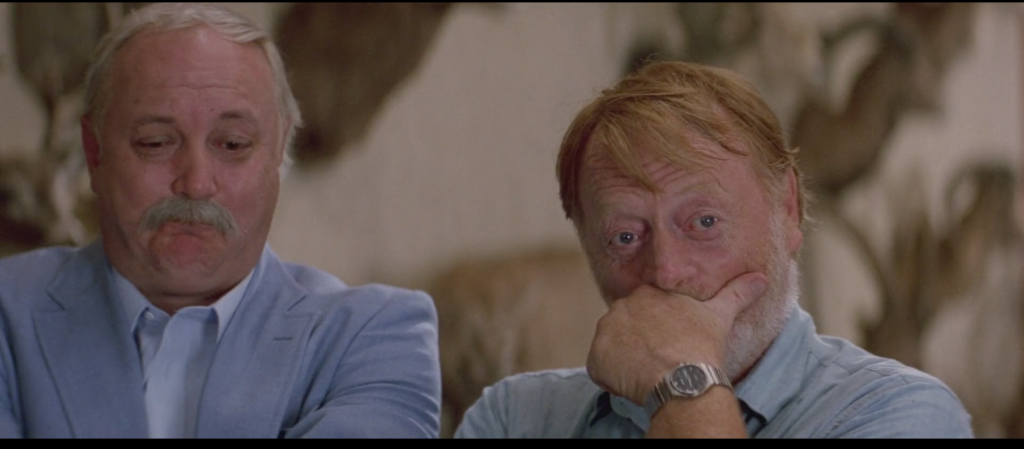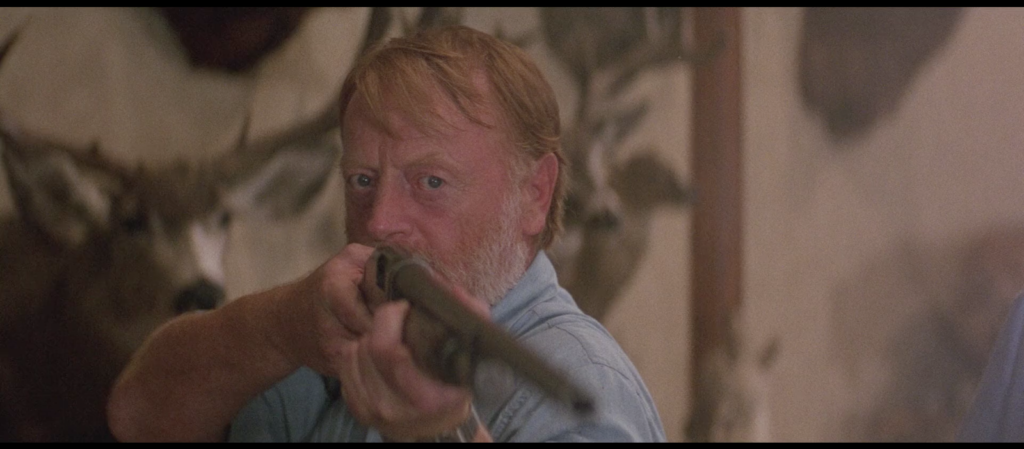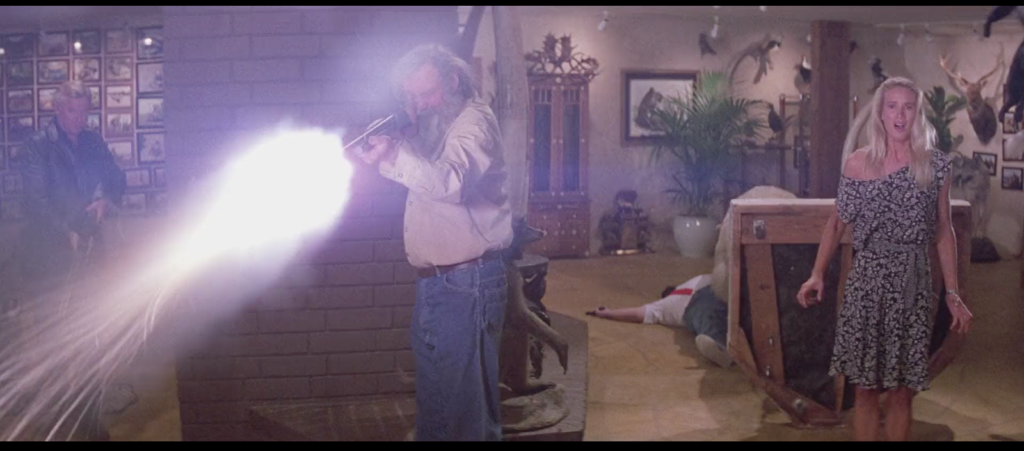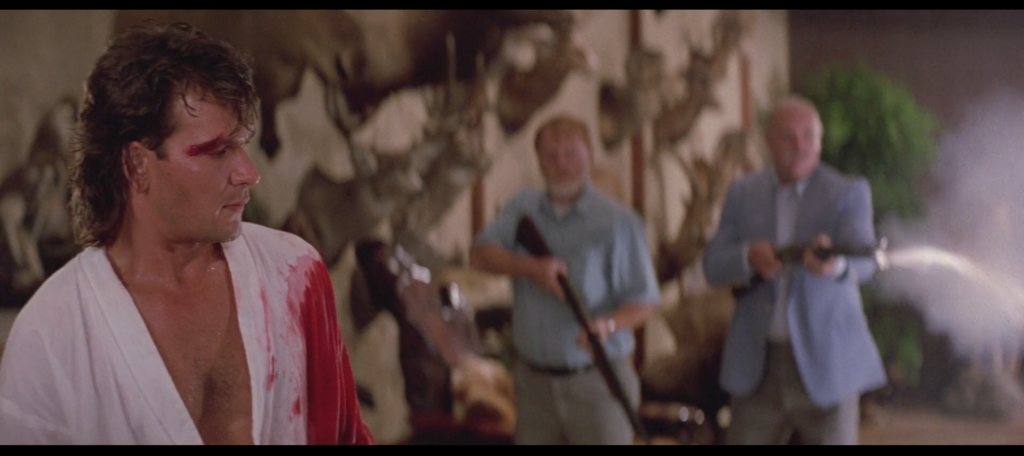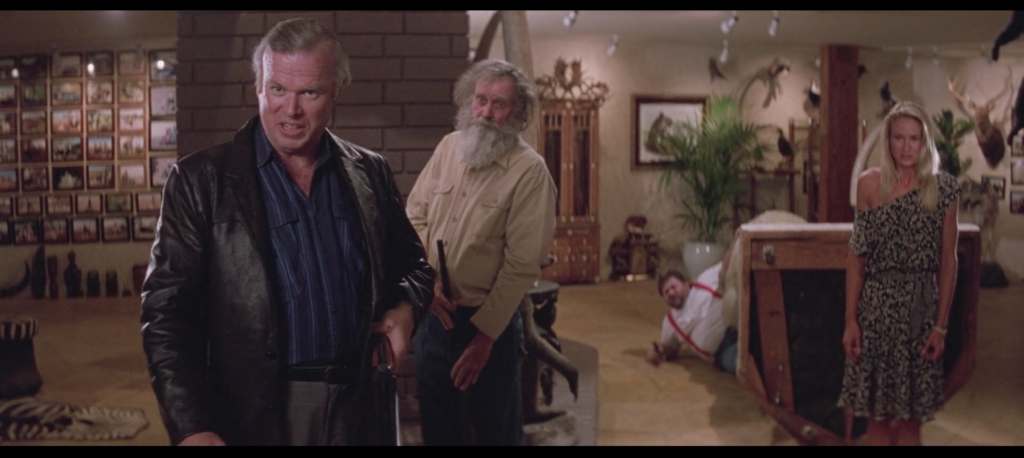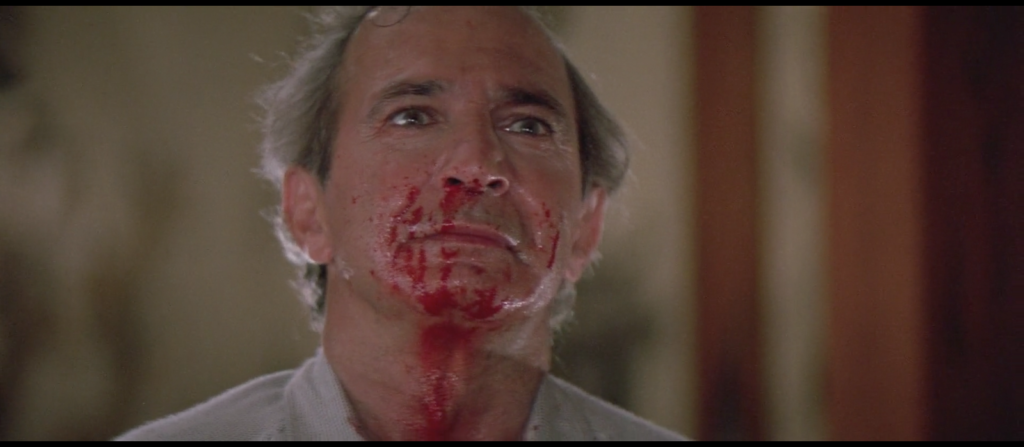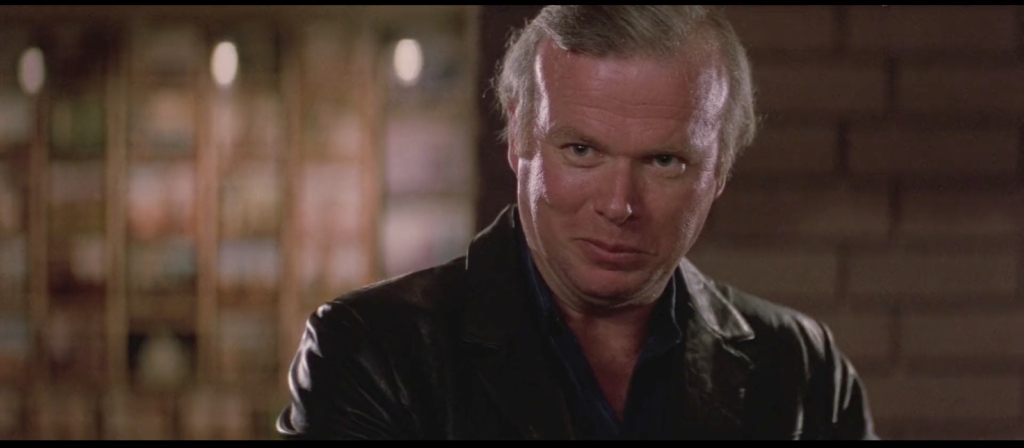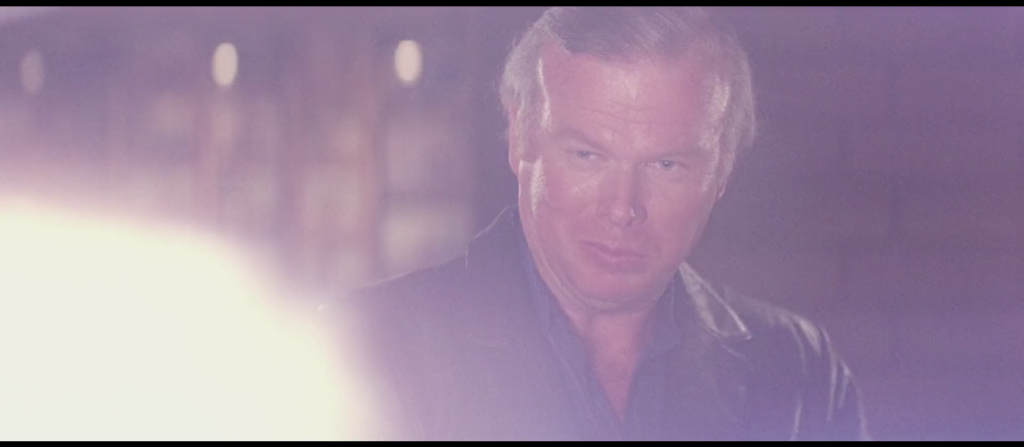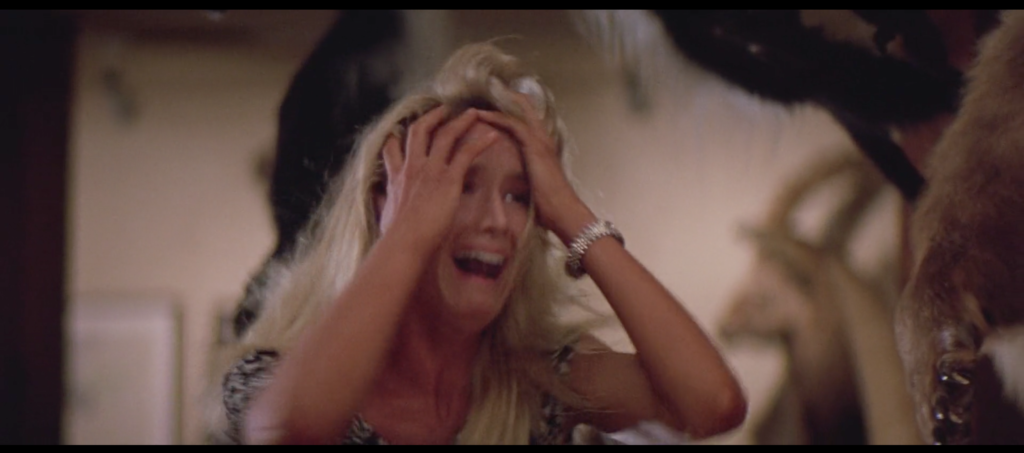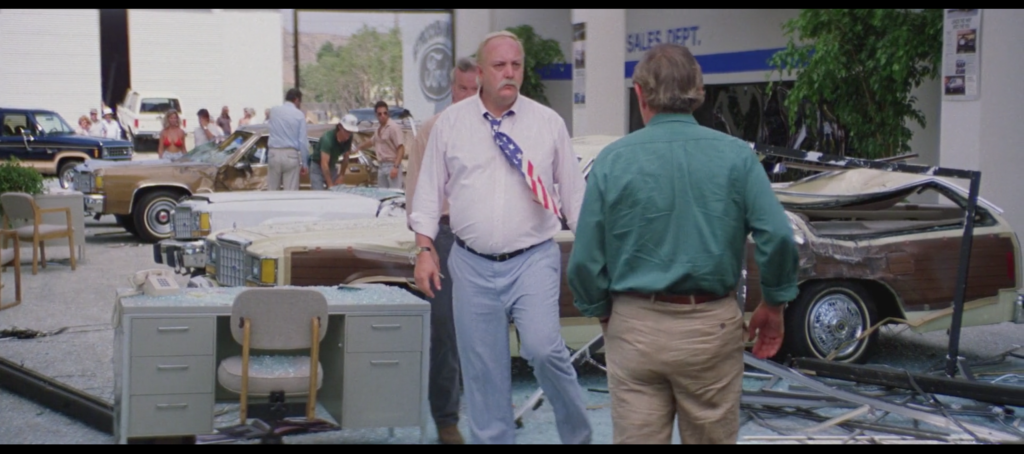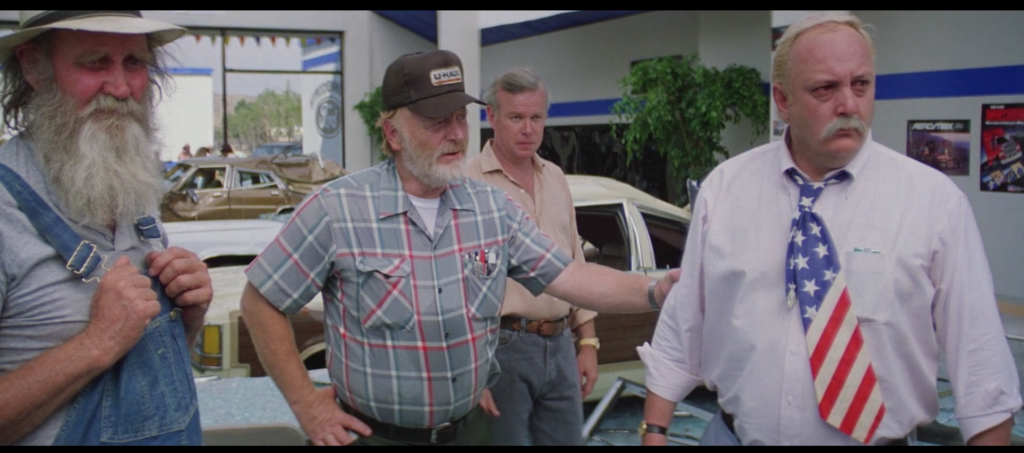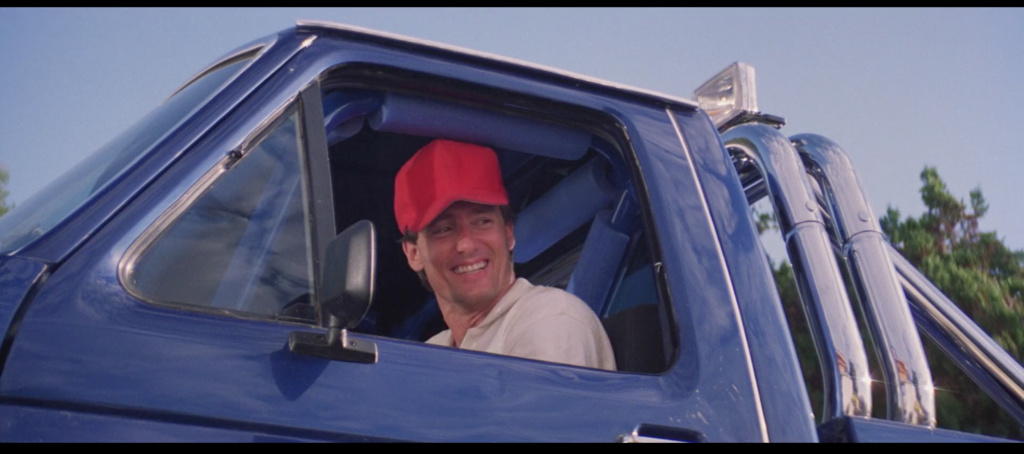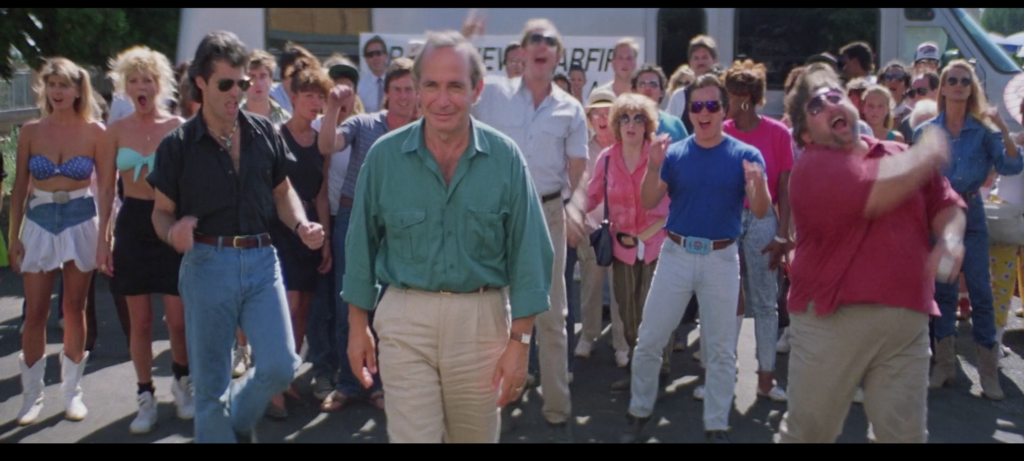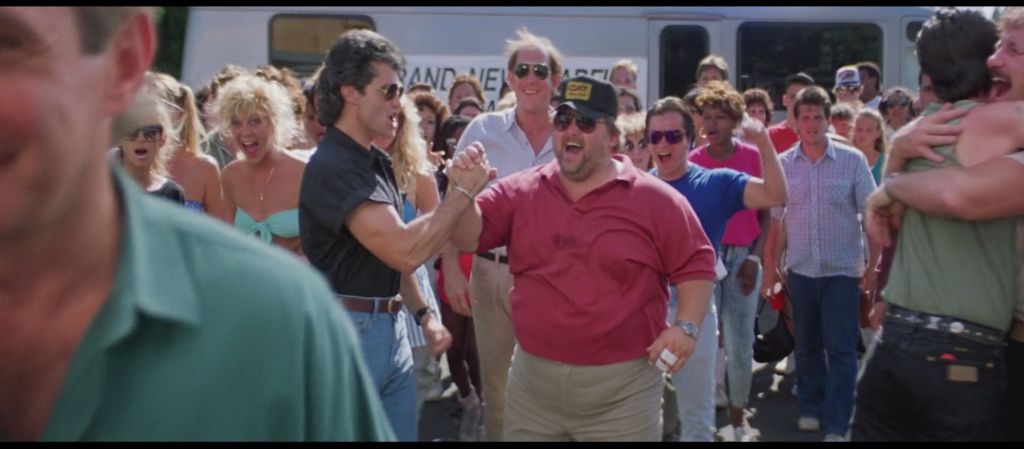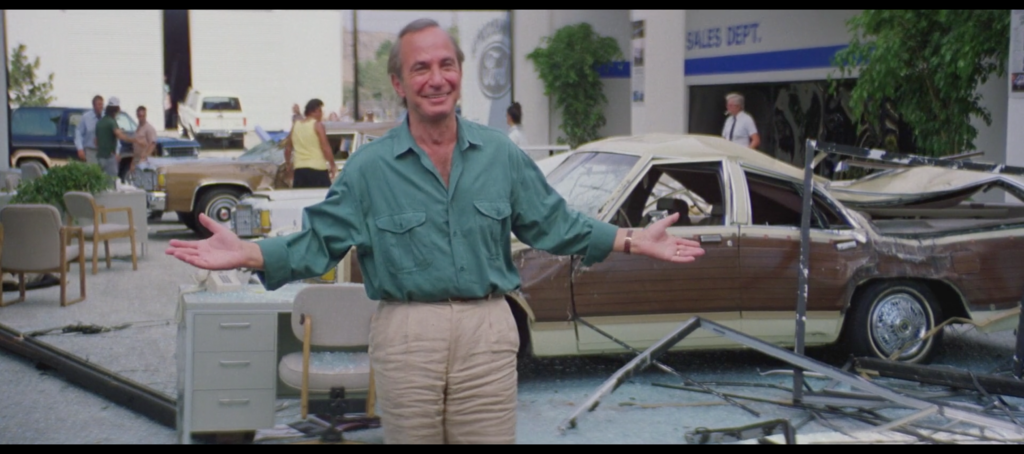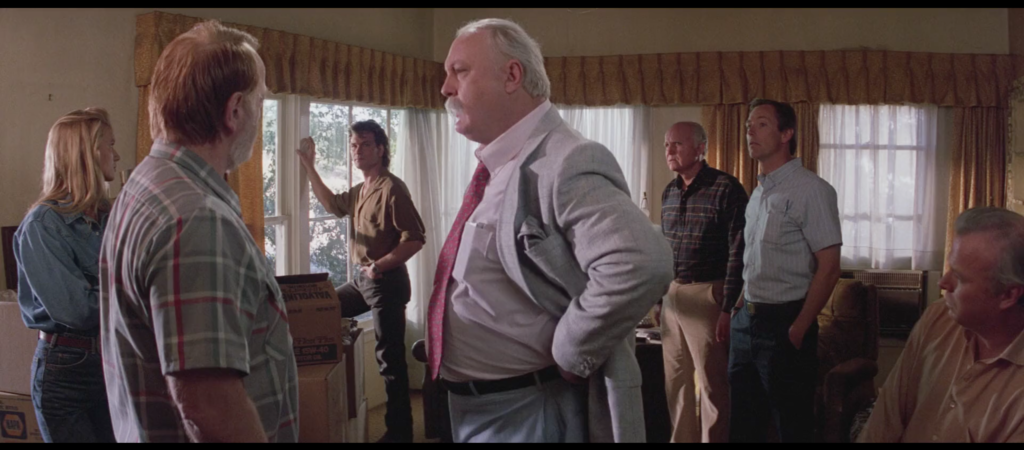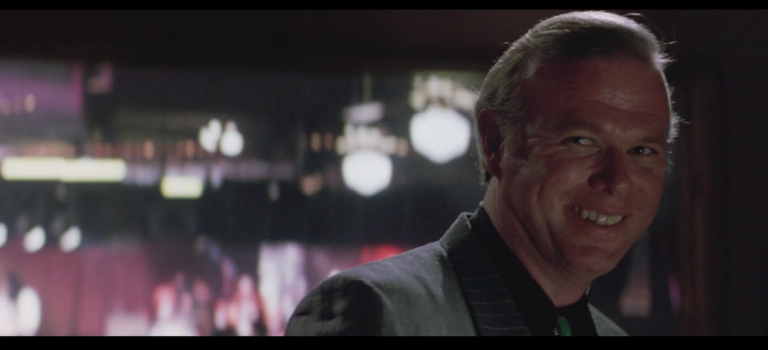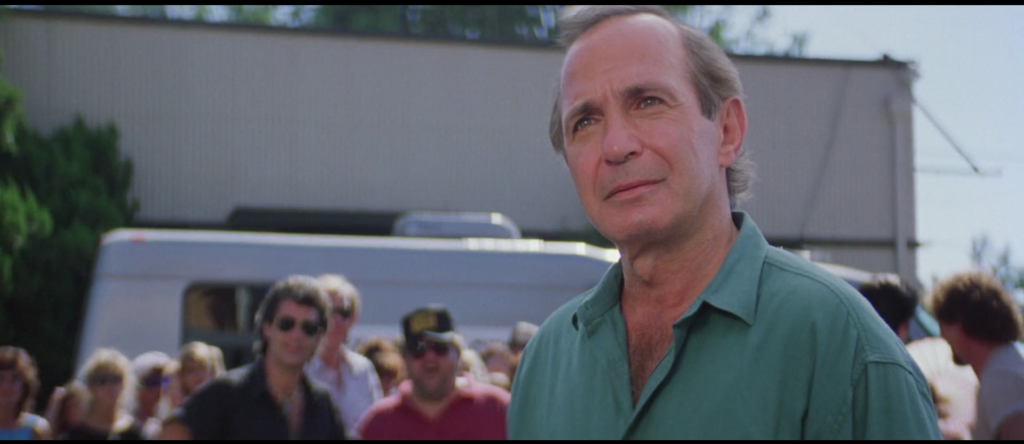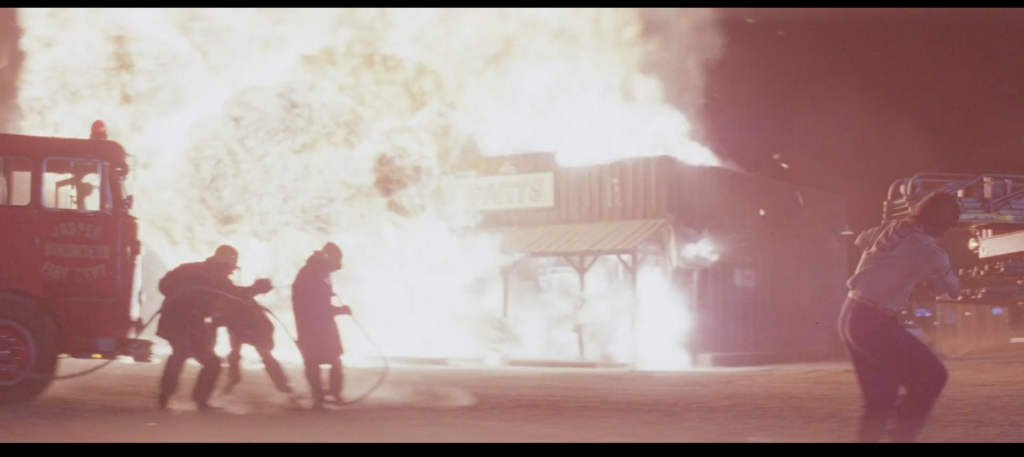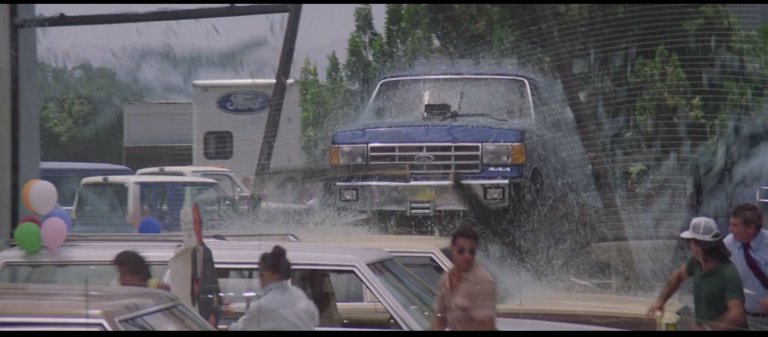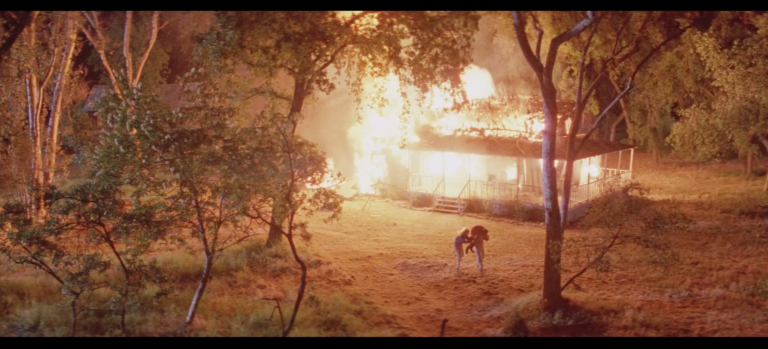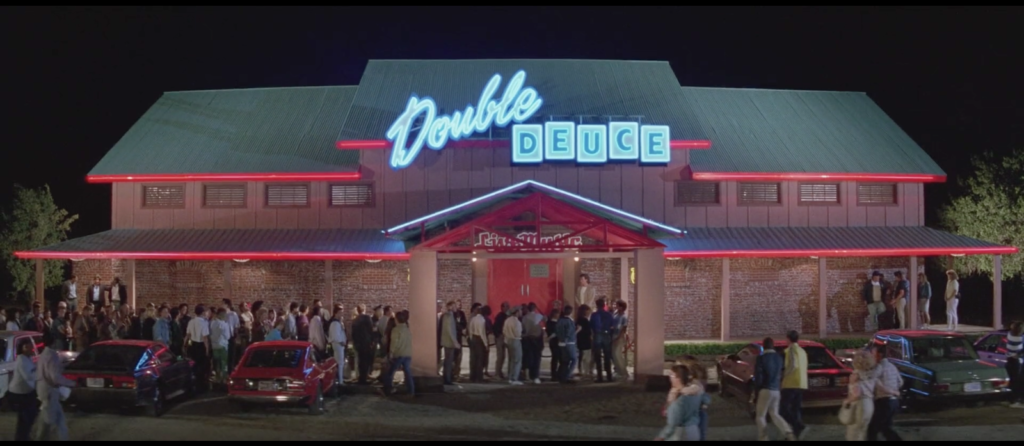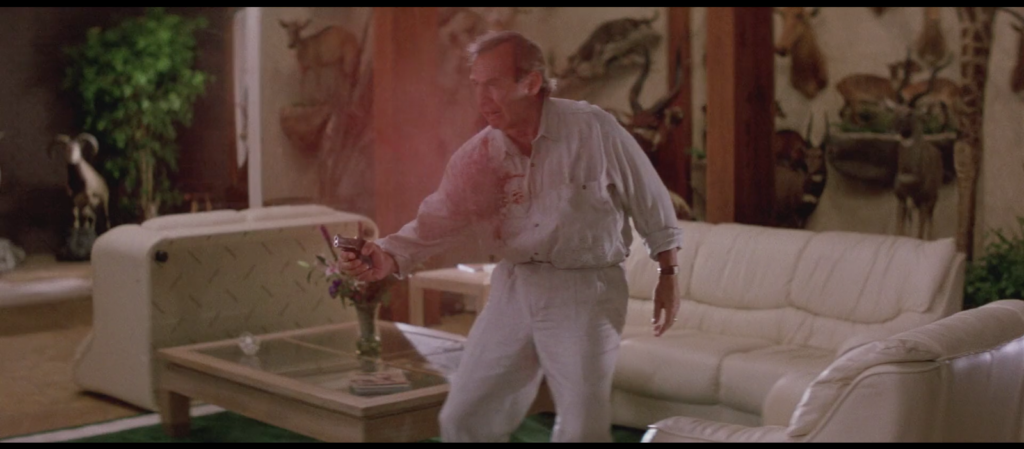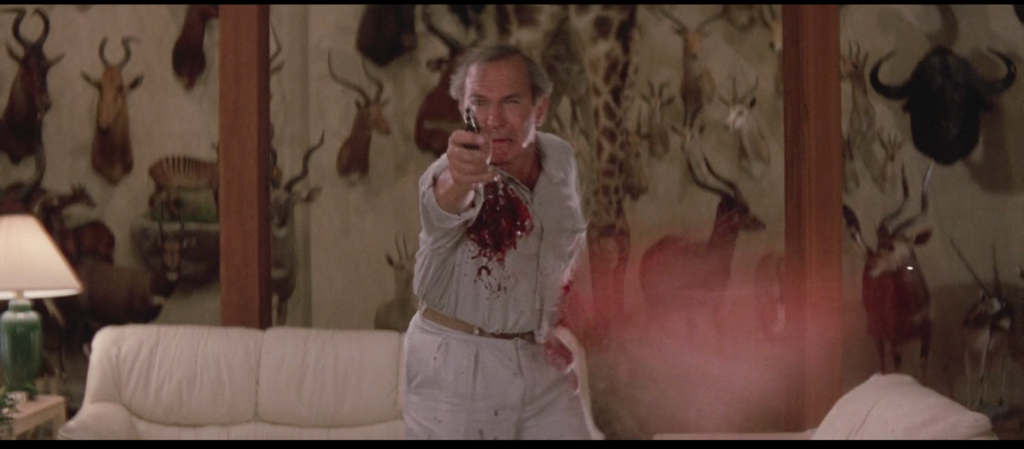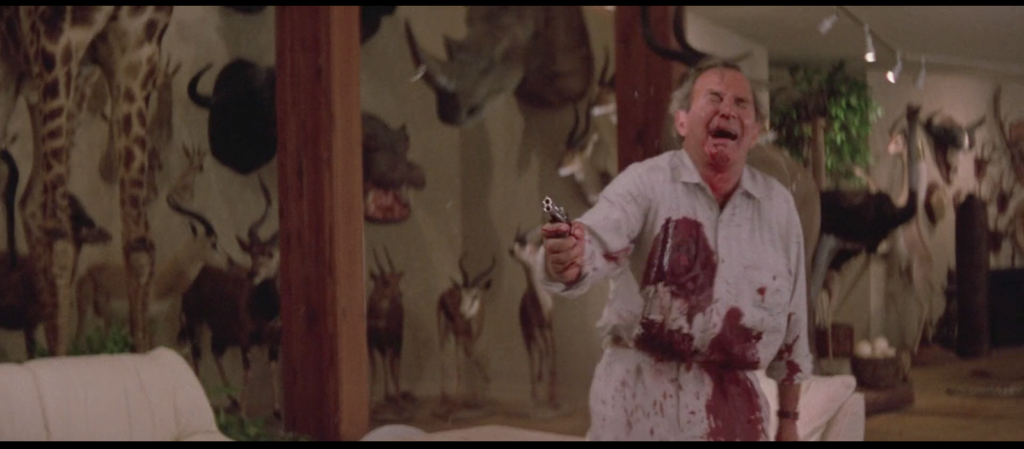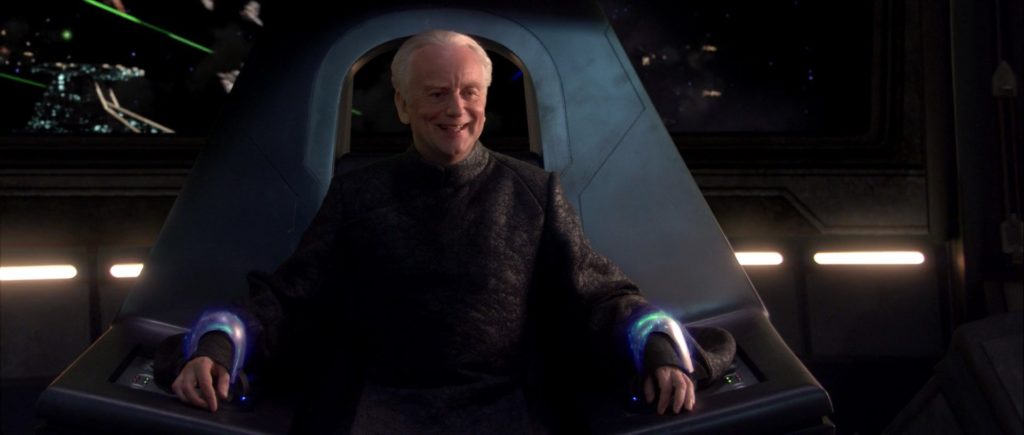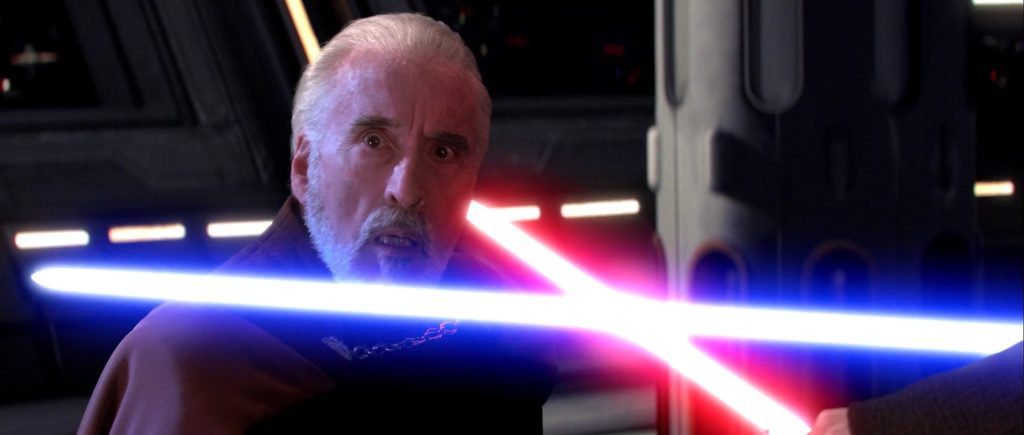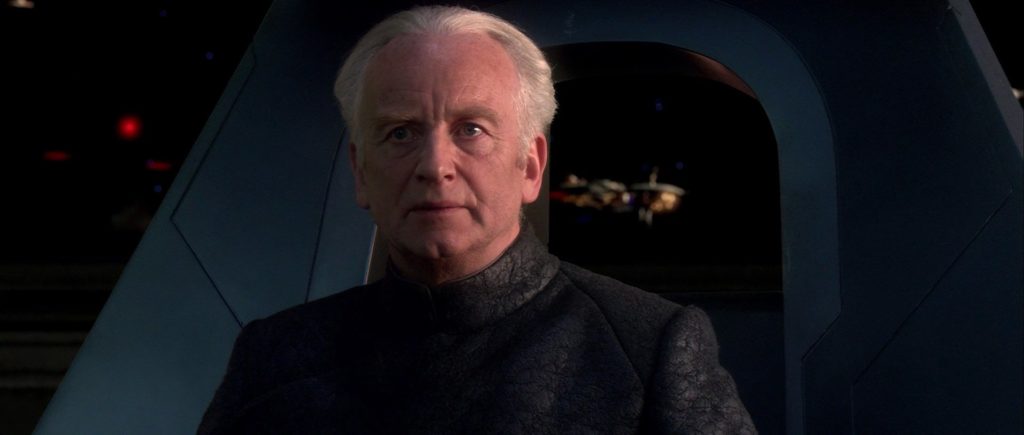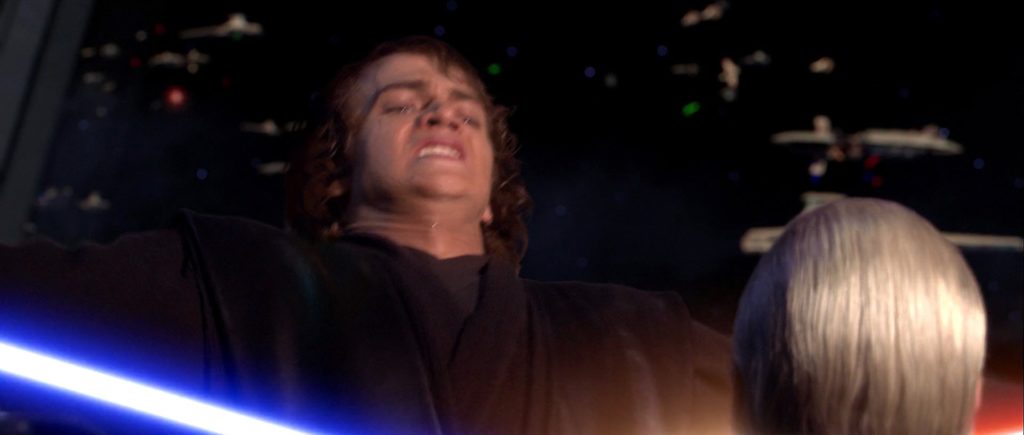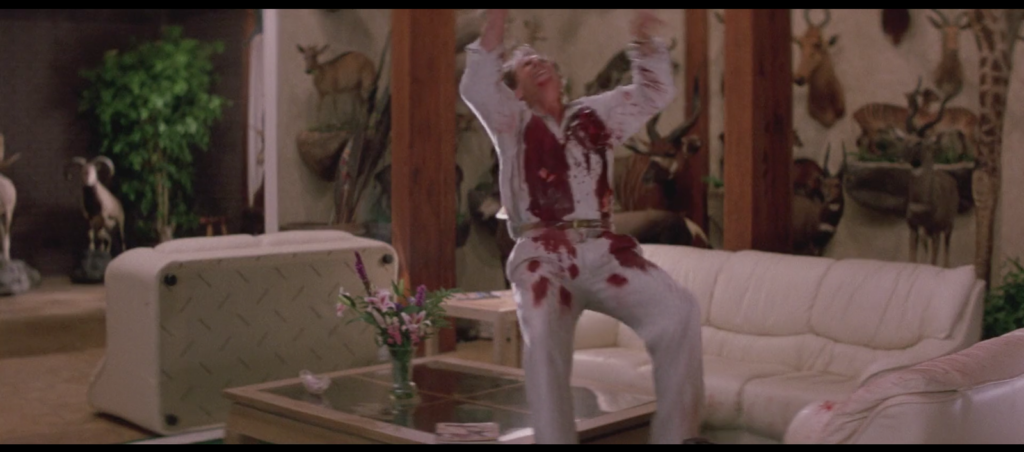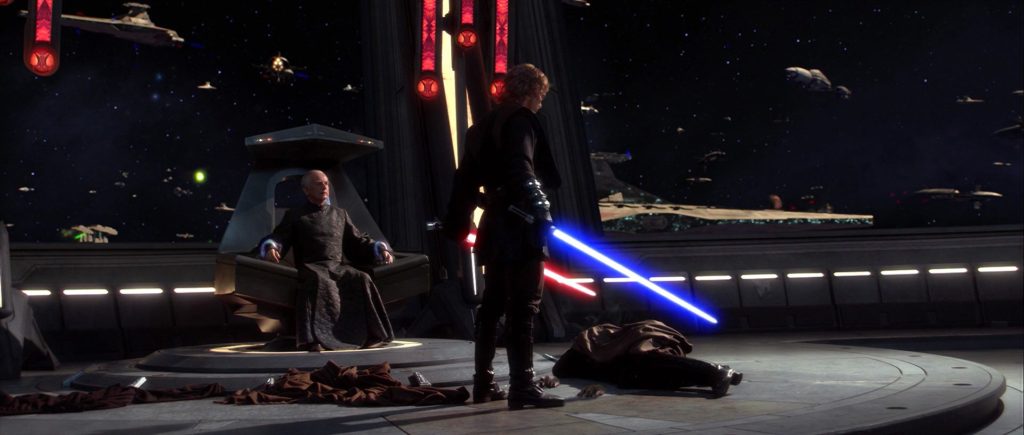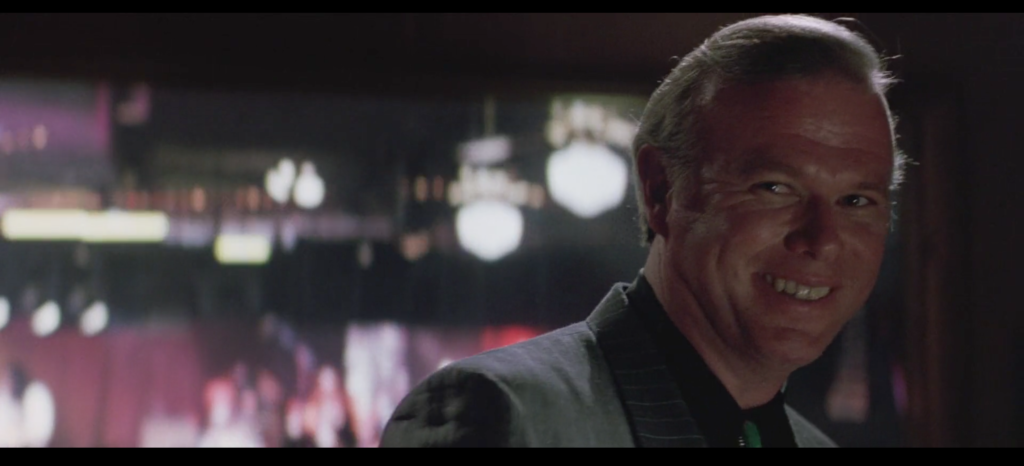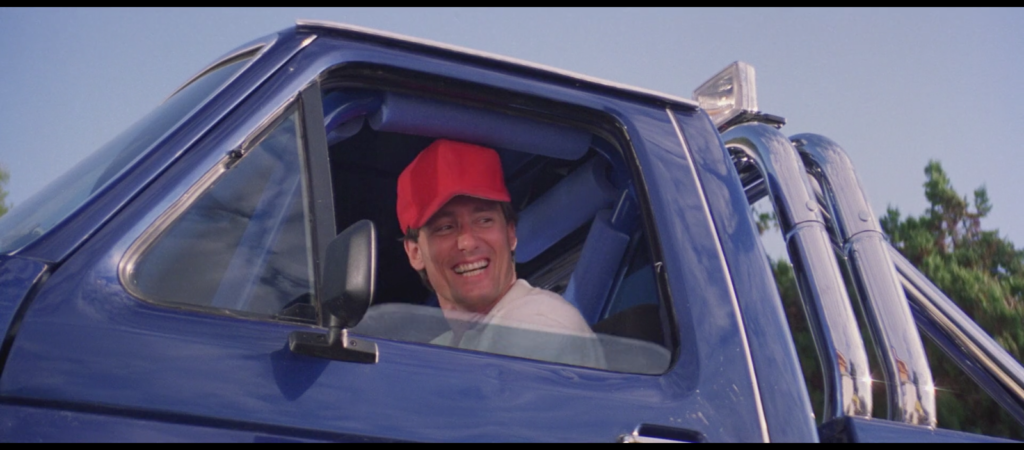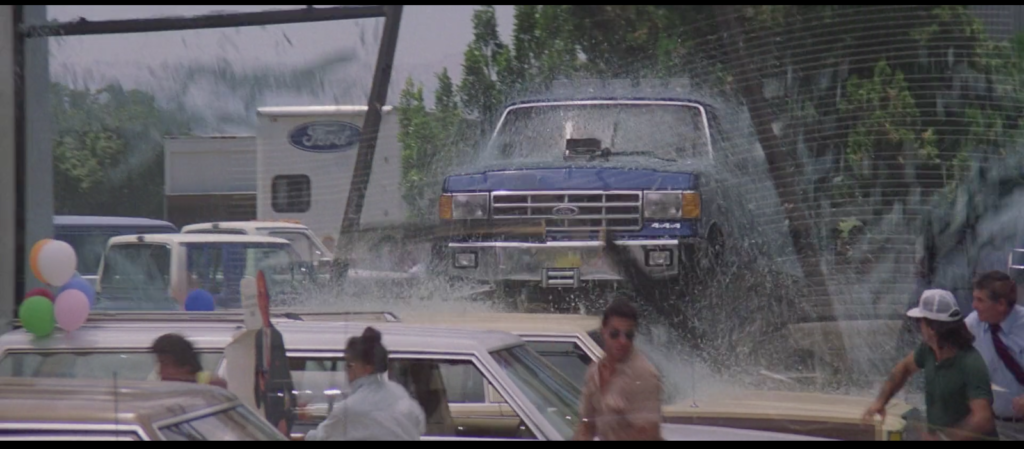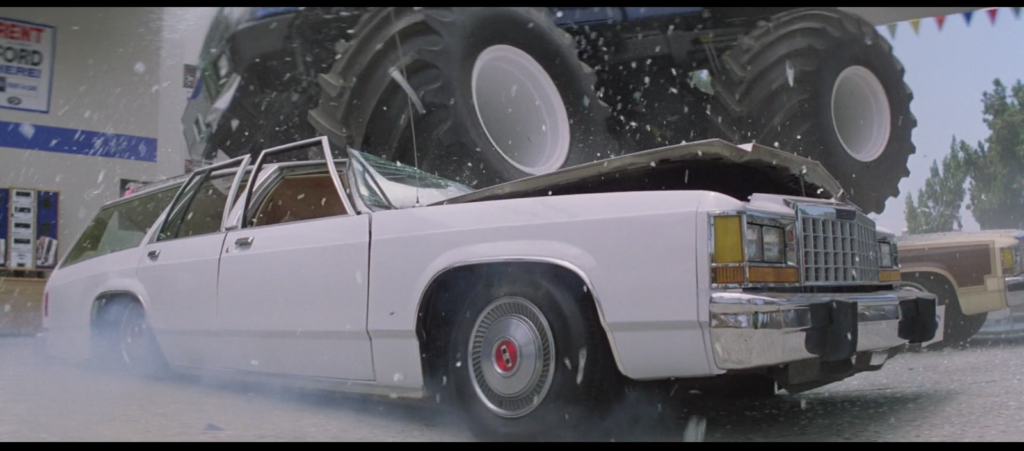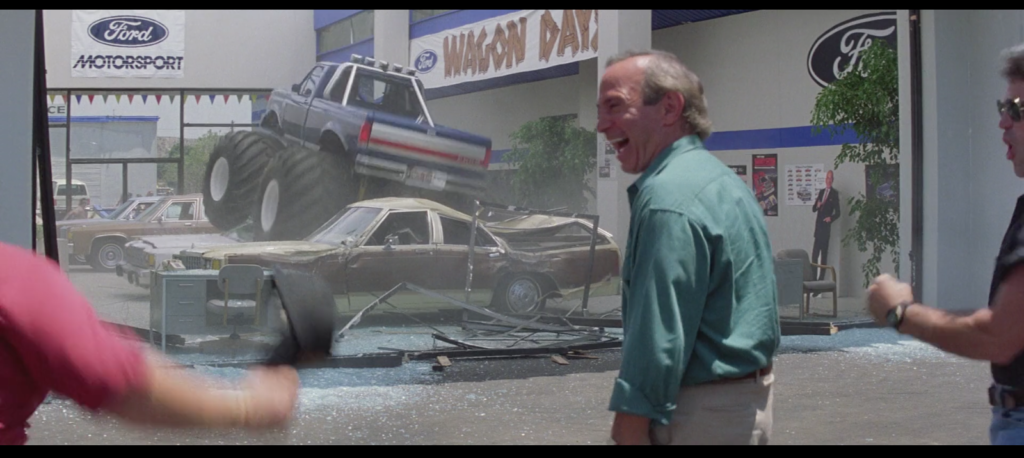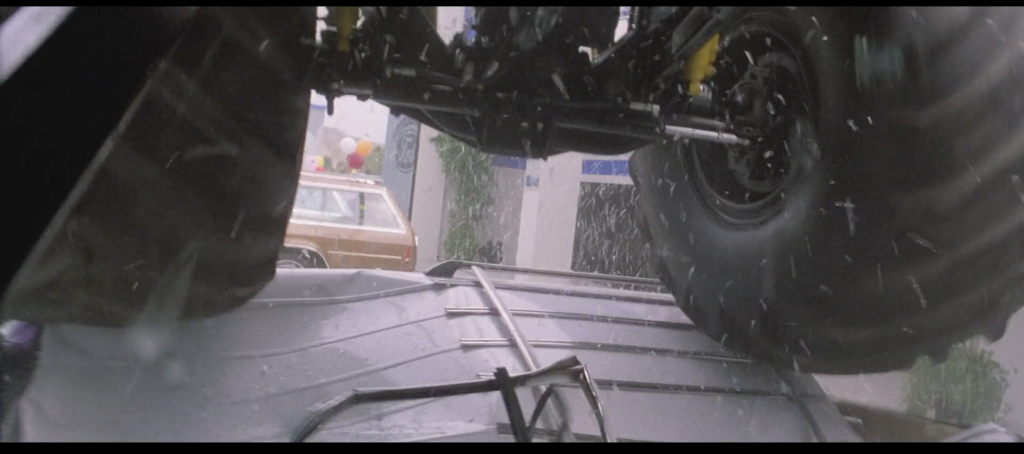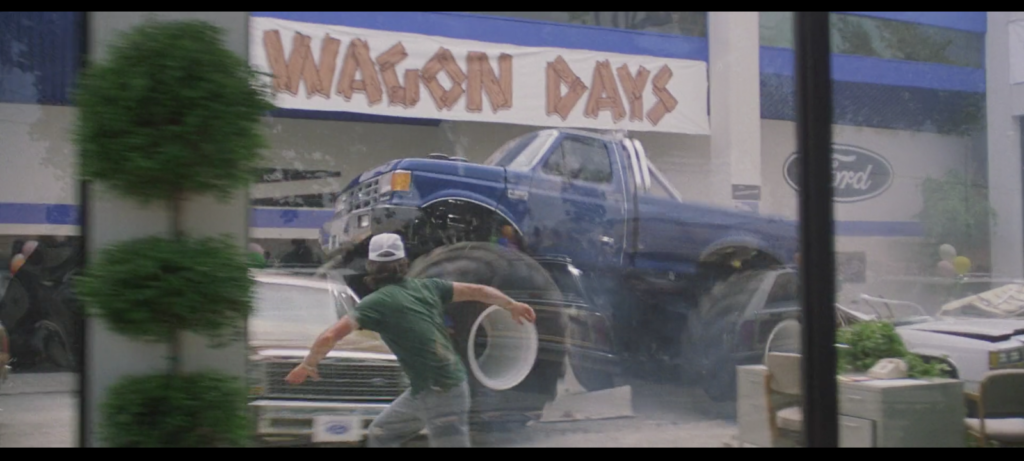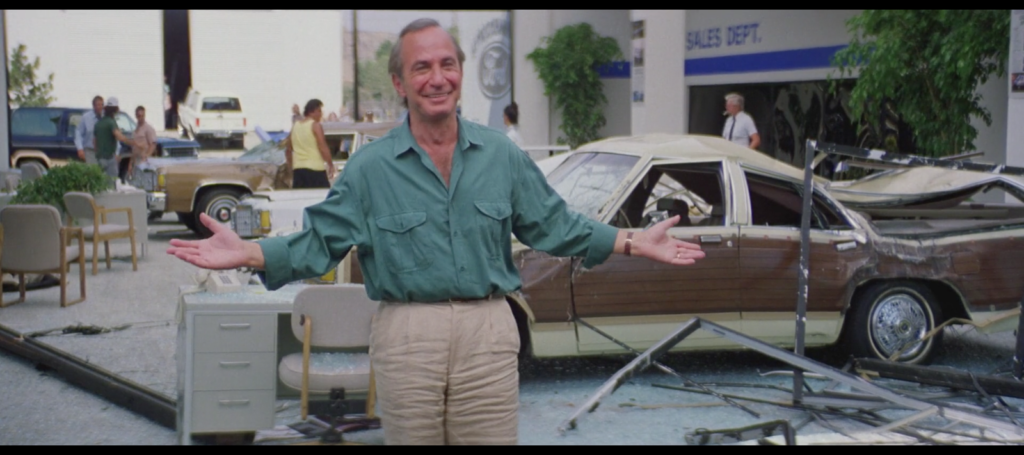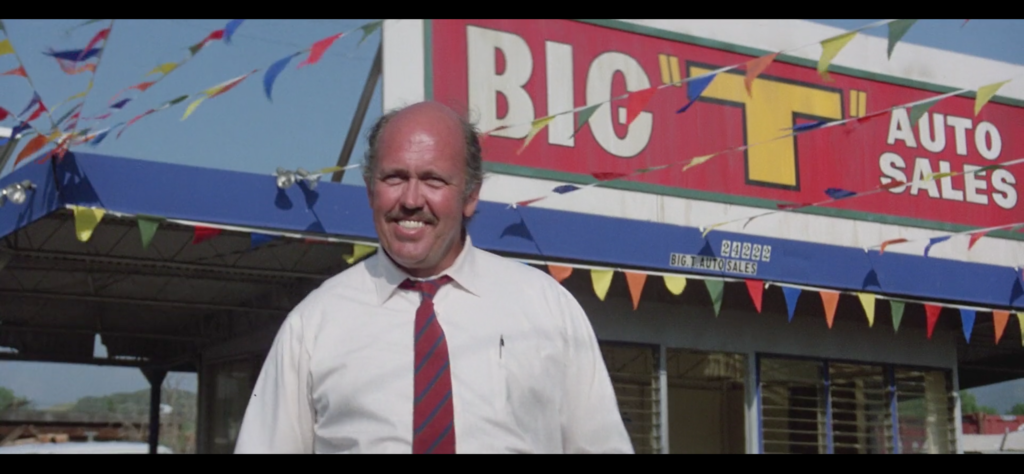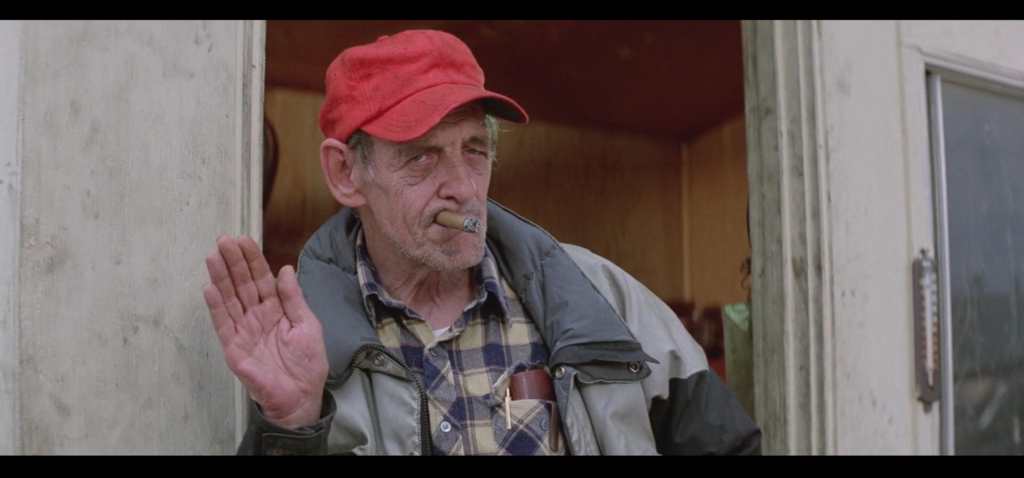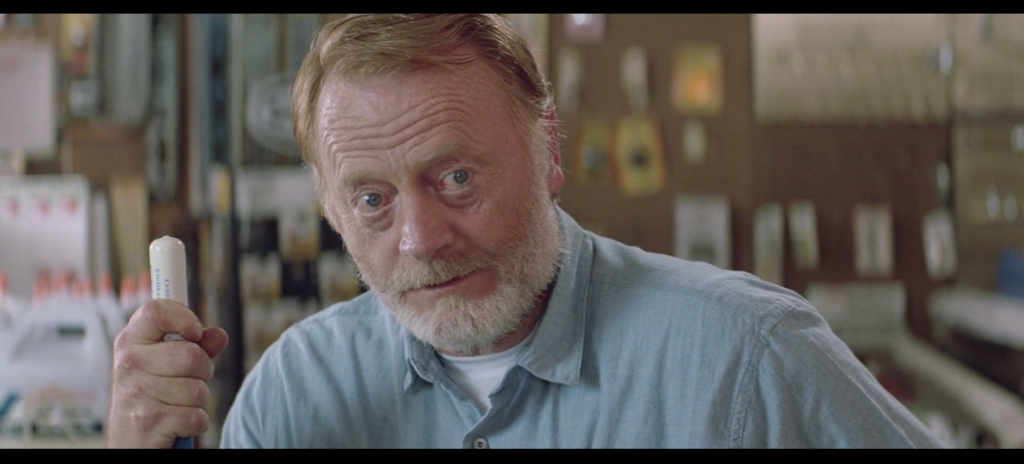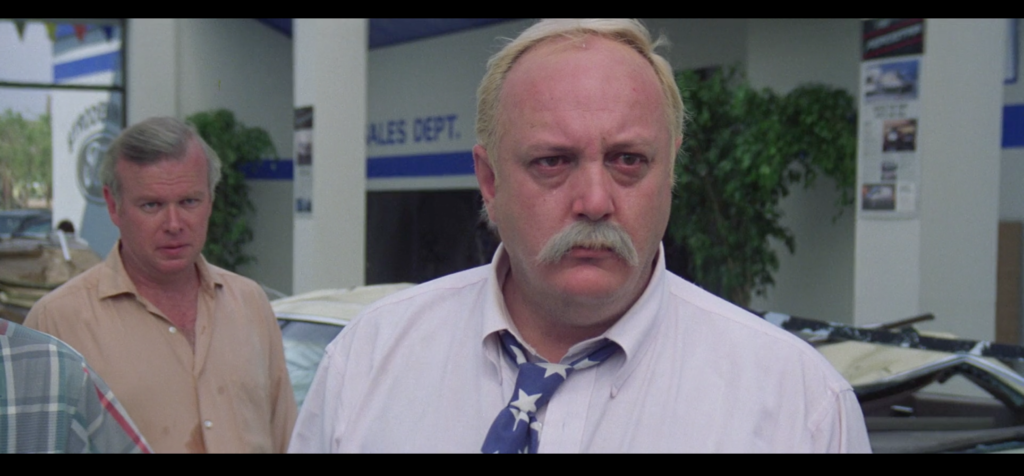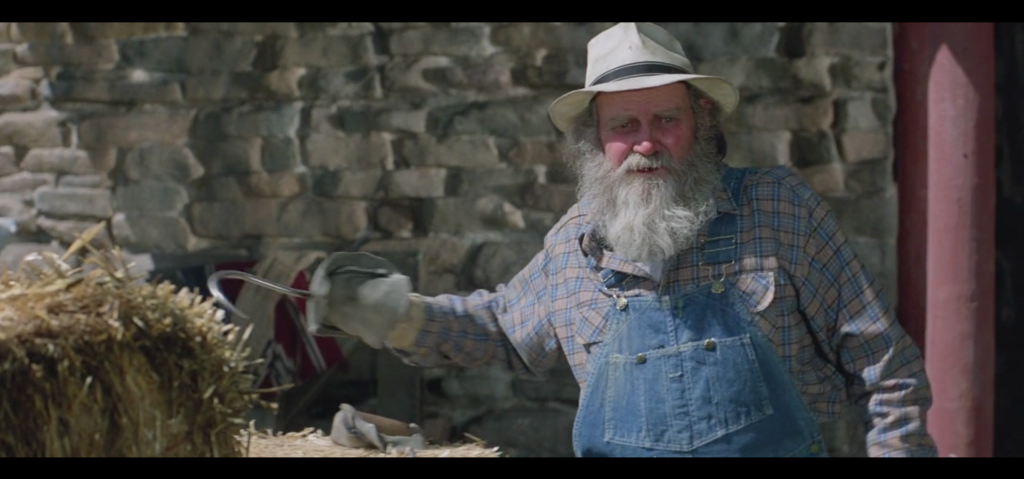Posts Tagged ‘pete strodenmire’
353. It is to laugh
December 19, 2019Pete Strodenmire and Red Webster can hardly contain their levity. And who could blame them? Tinker just said “A polar bear fell on me”! That’s objectively hilarious. Oh, sure, they just shot to death their nemesis of many years and are standing just feet away from his bullet-ridden corpse, one of five dead bodies currently festooning the property. And if they hadn’t opened fire, that man would likely have killed their friend Dalton, and quite possibly Dalton’s girlfriend and the dead man’s ex-wife Dr. Elizabeth Clay as well. And had that happened, it’s hard to imagine the blood-dimmed tide that would have swallowed Jasper, Missouri, as Brad Wesley used the fortune amassed from his commercial ventures to hire a new army of goons and seek vengeance on all those who aligned themselves against him. Pete and Red stood on a knife’s edge of carnage and did what needed to be done to prevent from tilting over into oblivion. This happened about ninety seconds ago. But now? Tinker said “A polar bear fell on me.” Ya gotta laugh!
349. “This is our town, and don’t you forget it.”
December 15, 2019Red Webster, Emmett, Pete Strodenmire, and Frank Tilghman have had enough of Brad Wesley. I mean, to put it mildly. Together they shoot him to death, though not before Tilghman turns Wesley’s “This is my town—don’t you forget it” back at him. The two men exchange a sort of slight smile after that. It’s the smile of men with secrets, if you ask me, though it would pass for an expression of resignation on one hand and triumph on the other to the layman.
Be that as it may.
The thing that strikes me about Brad Wesley’s death today is how quickly it follows the murder of his goons. The bodies of Morgan, O’Connor, Ketchum, and Pat McGurn are still warm, and Jimmy is probably just a few miles downstream, and blam blam blam blam, no more Brad Wesley. They were the iron fist with which Wesley ruled Jasper, from JC Penney to shining Fotomat. Take them away and the man is revealed as a paper tiger, albeit one capable of nearly murdering the best damn cooler in the business.
To put it another way, Brad Wesley fell when his goon squad was supplanted with another. Had Red, Emmet, Pete, and Tilghman joined forces earlier, perhaps they could have out-muscled Wesley’s muscle, or at the very least outgunned them. All they lacked was a fighting spirit, and Dalton gave that to them. It already was their town. All they had to do was rise up and claim it.
348. Death and the Doctor
December 14, 2019It’s hard to describe the cocktail of conflicting emotions Dr. Elizabeth Clay must be experiencing in this moment—the moment when her uncle, Red Webster, shoots her ex-husband, Brad Wesley, to save the life of her boyfriend, James Dalton. Just re-read that sentence and imagine yourself in your shoes. Here’s the kindly old man who raised you, and whom you moved back to Jasper after leaving the place so you could take care of him in his old age. He’s got a gun, and he’s just used it to shoot the man who—this is conjecture, but justified conjecture—you used to love, until you saw his ugly side. I’d imagine, given what we see of his treatment of Denise, that physical abuse was involved, since I doubt Denise was his first victim and since it would explain why the Doc skipped town instead of merely divorcing him. This man, with whom you once envisioned your future, has used your appearance on the scene to pull a gun with which he intends to shoot your current love interest. Only he’s not quite your current love interest at the moment, is he? The night before you watched him murder a man, tearing his throat out with his bare hands. Earlier today he tried to physically drag you out of town with him before you broke free and told him you had no intention of going anywhere with him. You’ve arrived just in time to watch him decide not to repeat this act, this time tearing the throat out of your ex-husband. Maybe you felt relief in that moment, but only briefly. Brad ruined it by pulling that gun, and Uncle Red ruined it by firing his. Three of the most important men in your life, locked in a dance of death.
And of course, it’s not over yet, no matter what Brad said. Three more men will put bullets in his body before he finally collapses through a glass table and dies. They include your boyfriend’s nominal boss—the reason this feud started—and his nominal landlord—who provided him with the place where you and he first made love. They also include a Ford dealer whose dealership you watched Brad Wesley demolish. Afterwards you and he had a talk, during which you attempted to appeal to the better angels of his nature, to no avail. The last thing he said to you was a threat against your boyfriend, right there near the rubble of Strodenmire Ford. The last thing he’ll ever say to you was that threat against your boyfriend, thanks in part to Strodenmire, who is participating in Brad’s murder before your very eyes.
And you abhor violence, don’t forget that. You’ve mocked Dalton’s tough-guy posturing to his face, on your first date no less. You broke up with him, kind of, because of the murder he committed last night. So you’re watching your own worst nightmare play out, again, involving men you’ve cared deeply about.
If you were Dr. Elizabeth Clay, could you ever recover?
276. Ragged Old Flag
October 3, 2019I can’t stop thinking about Pete Strodenmire’s tie. It’s Wagon Days down at the dealership, see, and Peter Strodenmire woke up that morning in good spirits. Sure, there was that business with Red to worry about, and Brad Wesley would almost certainly stop by to rub his nose in it, but Strodenmire didn’t mind. It was a beautiful morning, a fine morning, the kind of morning that makes the day seem endless with sunshine and possibilities. And here it’s Wagon Days—the most wonderful time of the year, he’d joke with Pam in the office. The good people of Jasper would flock to Strodenmire Ford for good deals, good friends, and all the free wieners they can eat. It’s enough to put a song in your heart, and for Pete Strodenmire that song was by-god the Star-Spangled Banner. Days like this made him proud to be an American, Brad Wesley be damned. And who knows—by the time this Wagon Day was over Strodenmire might be that much closer to his own American Dream, that little slice of paradise in Key Biscayne. He could picture the little driftwood sign with the house’s name in handpainted letters: BEACHY KEEN.
Yes, it was going to be a fine day. A fine, fine day.
272. The Drawing of the Four
September 29, 2019Boardwalk Empire, Terence Winter’s underrated Prohibition Era gangster drama, featured many real-world figures of underworld renown, though mostly at ages much younger than the ones at which they’d become famous. They’d be mixed in with entirely fictional characters, or heavily fictionalized analogues of actual people. Often you didn’t realize until halfway through a scene that, oh my god, that’s Lucky Luciano and Meyer Lansky and Bugsy Siegel and Al Capone all hanging out together. The resulting frisson was a thrill.
In his lamentable mega-series The Dark Tower, Stephen King officially introduced the concept of ka-tet, a group of people drawn together by the benevolent force that partially orders the universe for a specific purpose. I say “officially” because if you’ve read his work you know that this is a recurring feature everywhere from It to The Stand. Often the characters themselves recognize that something has happened when they’re all finally assembled together—that the final piece of a puzzle they didn’t even know they were solving has slipped into place, that the whole of them is somehow greater than the sum of its parts, that when faced with other people there’s a palpable sense of belonging and un-belonging. Great deeds can be done in ka-tet.
Here you see Emmett, Red Webster, Frank Tilghman, and Pete Strodenmire, together for the first time. Until now Emmett had never been seen off his ranch, and Strodenmire had only been seen one time before in total. They’re watching Brad Wesley walk away, having proclaimed “This is my town—don’t you forget it.” Red is about to bust Strodenmire’s balls by repeating what Strodenmire said to him after his auto parts store was destroyed: “You got insurance, don’t you?” Tilghman is, as always, very peculiar.
Yet something looks right here, doesn’t it? Something about this configuration of four weird old men staring into the middle distance rings true. When ka-tet is formed, how can any JC Penney magnate hope to stand against it?
268. Happiness Is a Squashed Ford
September 25, 2019Gary grins from ear to ear. Jimmy does a double fist-pump. O’Connor raises an arm aloft in triumph. Tinker yee-haws his hat off his head. Pat McGurn and Morgan? They literally embrace. (Jimmy and Tinker merely clasp hands.) The Goon in Blue (about whom more later) is just happy to be there. And Brad Wesley acts like a game show host. Truly, the destruction of Strodenmire Ford by the coward Gary Ketcham is the high-water mark of villainous delight for the Brad Wesley organization. For once in their miserable lives they managed to get one over on their enemies in a way that did not require any of them to get their asses kicked. They didn’t even need to throw a punch, much less take one. They just had to get behind the wheel of a monster truck—one of them did, anyway—and drive on through to the other side. The rest take a joy in this of the sort you see in bars when the home team wins the Super Bowl. They are thrilled, inordinately thrilled, “the director overdid it” thrilled, to have watched a monster truck run over a car dealership. Did I point out that Morgan and Pat, the two orneriest cusses in the whole gang, hug each other, like one just announced his wife is expecting? This is the rough beast they gave birth to instead, haulin’ ass towards Bethlehem to put a little something down on a new car.
264. The Council of Elders
September 21, 2019The destruction of Red Webster’s Auto Parts by the coward Brad Wesley triggers alarm bells for the Jasper Chamber of Commerce, or whoever the assembled worthies in the scene that follows the morning after the bar fight are supposed to be. Red and Tilghman, sure, they’d be there. Dalton, why not, he’s obviously the focal point for Brad Wesley’s anger. Doc is Red’s niece, and as the ostensible purpose of the meeting is to persuade him not to pack up and run away from town it makes sense she’d be there. These other fellows? At this point it’s anybody’s guess. So let me be the first to assure you that you will never see the two gentlemen in the background ever again. Who are they? What do they think? Are they Fotomat and 7-Eleven franchisees who got into bed with Brad Wesley and are now feeling buyer’s remorse? Does maybe one of them own the boat store that forms the third point of the Double Deuce/Red’s Auto triangle? Why isn’t Emmett here? What about Big T of Big T Auto Sales, or the crusty guy who sells Dalton spare tires, or the crusty guy who runs one of the several greasy spoons Dalton visits, or anyone we’ve ever seen before? We will never know. Accept the mystery.
But the mustachioed fellow in the ill-fitting gray suit in the center? Ah, so you’ve met Pete Strodenmire. We are currently one hour and twenty-four minutes into the film, with half an hour to go; what better time to introduce a major new character—as well as the fourth and final Car Salesman of Jasper, Missouri—who will go on to participate in the killing of the film’s antagonist? He does little of equivalent efficacy here. He just asks Red if he has insurance and offers to contact a friend in the FBI in Springfield about the arson in order to work around Wesley’s control of the local constabulary. Red truly does not want to hear about either proposal. So in its way this film is setting up our next encounter with Pete just a few minutes hence, when he proves as unable to stop a monster truck from running over his car dealership as he is to talk Red off the ledge here.
One final note here: Can you guess which august personage here assembled wants to continue the fight?
Now why on earth would that be? We wonders, precious, we wonders.
099. The Phantom Menace
April 9, 2019WESLEY: This is my town. Don’t you forget it.
DALTON: So what does he take?
RED: Who?
DALTON: Brad WesIey.
RED: Ten percent…to start. Oh, it’s all legal-like. He formed the Jasper Improvement Society. All the businesses in town belong to it.
DALTON: You’ve gotten rich off the people in this town.
WESLEY: You bet your ass I have. And I’m gonna get richer. I believe we all have a purpose on this earth. A destiny. I have a faith in that destiny. It tells me to gather unto me what is mine.
RED: Twenty years I’ve watched Wesley get richer while everybody else around him got poorer.
TILGHMAN: Anyway, I’ve come into a little bit of money.
TILGHMAN: This is our town. And don’t you forget it.
009. Running over a car dealership with a monster truck
January 9, 2019Road House is a film in which a man runs over a car dealership with a monster truck.
Not a car. A car dealership.
He runs it over.
With a monster truck.
They mount a camera between the tires and everything. To capture every nuance. Of running over a car dealership. With a monster truck.
During Wagon Days, no less.
Obviously I’ve known that this happened ever since I first saw the film. I appreciated how over the top it is, even for Brad Wesley and his goons, and even for Road House. The presence of the monster truck at all is…well, it leaps right out at you the first time you see Ketchum drive up to Wesley’s mansion in it, like his brother had borrowed his Mercury Cougar for a trip to St. Louis so he drove his other car to his boss’s house, and his other car just so happened to be a monster truck. But it wasn’t until the other day, when I wrote the phrase “running over a car dealership with a monster truck,” that…no, actually, it was some hours later, when I reiterated the point on twitter. That’s what brought it all home for me. Road House is a film in which a man runs over a car dealership with a monster truck.
It sounds like any other wanton act of vehicular destruction, at first. “Oh yeah, he ran over a c—wait, what?” It takes a second to sink in. The closest point of comparison I can come up with is in the post-show interviews at the end of Waiting for Guffman, when Parker Posey’s character talks about her dad getting out of jail because he didn’t do anything that bad, “he just ruined some property.” Stole, destroyed, sure, whatever, but then you register the word choice. Ruined? Now I’m intrigued. Now I want to know, but also I don’t want to know. You know? Ruining property, like running over a car dealership, is understating an overstatement.
The other film I think of when I think of this moment is Citizen Toxie: The Toxic Avenger IV, because that’s the movie that was in pre-production when I interned at Troma Studios in the summer of 1999. I had very little to do with the finished product; my main contributions were scouting for a production office (unsuccessfully) and taking an uncredited rewrite pass at the screenplay (also unsuccessfully, though interns rewriting screenplays says a lot about Troma).
What I did do was read All I Need to Know About Filmmaking I Learned from The Toxic Avenger, the memoir cum how-to manual by Troma co-founder and creative force Lloyd Kaufman and a then-unknown James Gunn. The idea that’s stuck with me the longest since I read the book, aside from Karo Syrup making the best fake blood, is that if you have any means at your disposal by which to raise the apparent production value of your film, you avail yourself of those means. An eccentric uncle with a crazy-looking house? A rich friend with an insanely nice car? A major urban metropolis with a tourist mecca where there are simply too many people for the cops to catch you should you choose to film someone running naked through Times Square without a permit? (The filming, not the nakedness.) It doesn’t matter whether or not these things are germane to your movie. They look awesome and/or expensive. Make them germane.
I think about this every time I see a movie about barfights at one in the morning set a scene in a Ford dealership in broad daylight where a deranged businessman orders his minion to drive a monster truck through a glass enclosed showroom and over every single new car inside of it. I think about it every time I see the monster truck in this movie at all. Road House had access to a car dealership and Road House had access to a monster truck, ergo Road House has a scene in which a man runs over a car dealership with a monster truck. Those who can, do.
003. The Four Car Salesmen of Jasper, Missouri
January 3, 2019If you think this sentence is confusing, then change one pig. —Uilliam M. Bricken, Jr.
An English professor of mine used that self-reflexive riddle to illustrate the way Christ’s parables are both medium and message: The second the concept behind the parable clicks, so does the larger point about ethical behavior or spiritual enlightenment.
In his book The Three Christs of Ypsilatnti, psychologist Mark Rokeach recounts an experiment, which he would later apologize for and reject as unethical, in which he placed three men who believed themselves to be Jesus Christ in regular group therapy sessions in hopes that encountering each other would shatter their delusions, to which end he occasionally manipulated them directly by concocting imaginary elements of their collective story himself. The experiment was unsuccessful.
This man is Big “T” of Big “T” Auto Sales, or so it seems safe to assume. We meet him around 17 minutes into the film, as he watches The Patty Duke Show on his office television while preparing to eat his lunch. He then notices our hero, Dalton, checking under the hood of a beat-up old car in the lot. “She’s a runner!” shouts this walrus-looking sonofagun as he strides out to meet Dalton face to face, treating the singular requirement of any used car sale—that the car being sold is capable of movement—like a selling point. Dalton drives a Mercedes when he’s not on the job, but since angry patrons of the bars at which he serves as cooler tend to take their frustrations out on his car after they’re ejected, he replaces it with a cheaply bought beater when he’s got a gig. He takes the car. We never see Big “T” again.
This man does not have a name, not that we’re given to know anyway. We meet him about one minute after we meet Big “T.” This fellow presides over some kind of automobile junkyard Dalton goes to not to purchase a used car, which he could have done here since used cars are visibly on sale in the background, but to stock up on spare tires, since people who are pissed off that he smashed their face through a table because their girlfriend was dancing on another table often slash his tires in revenge. Dalton loads the trunk of his new old car with tires and gives the proprietor a little salute, which the old man returns. We never see this man again.
This man is Red Webster, proprietor of Red’s Auto Parts. We meet him around 33 minutes into the film, after which he becomes a major character. His store is the closest business to the Double Deuce, with which it shares some kind of vast dirt parking lot or road or whatever it is despite being about a football field away. His niece is Dr. Elizabeth Clay, former love interest of Brad Wesley and, soon, current love interest of Dalton. He is Dalton’s primary source of information on the protection racket run by Brad Wesley under the guise of civic improvement. Dalton goes to Red’s store to order a new windshield and buy a new antenna for his car after both were destroyed by angry ex-patrons of the Double Deuce the night before. This is the third scene in which Dalton makes an automobile-related purchase, and the third business establishment at which he does so. The movie is not quite 35 minutes old.
This man is Pete Strodenmire, proprietor of Strodenmire Ford. We meet him around one hour and 24 minutes into the film, at a hastily convened meeting of Jasper business owners, plus Dalton and Elizabeth, to discuss the prior night’s destruction of Red’s Auto Parts in an arson ordered by Brad Wesley. There are seven people at this meeting. Four are Dalton, Elizabeth, Dalton’s nominal boss Tilghman (seen above in the background), and Elizabeth’s uncle Red. The other three, including Strodenmire, are people we’ve never seen before; the two who aren’t Strodenmire have no lines, and we never see them again. The next time we see Strodenmire, Brad Wesley has ordered one of his goons to run over the man’s entire glass-enclosed showroom of new cars with a monster truck, which he does with glee. Strodenmire winds up being one of four men—along with Red, Tilghman, and Dalton’s nominal landlord Emmet—who murder Brad Wesley, the film’s antagonist, with shotguns during the climax. Again, we meet him an hour and a half into a two-hour film that has already included three other car or car-parts salesmen.
This man is Emmet. We meet him about half a minute after we meet the man from whom Dalton purchases tires, when he rents Dalton a barn-loft apartment that must have cost $50,000 dollars to build for $100 a month. He doesn’t sell cars or car parts, but you can see how he and the Four Car Salesmen of Jasper, Missouri share a similar aesthetic.
Road House is a movie about a road house, that much is true. It’s not a movie about roads, however, nor about what you drive on them. (Much more time is spent showing Dalton buying cars, parking cars, and buying car parts to fix what happens to the cars after they’re parked, than is spent showing anyone actually driving cars.) Thus, the film’s maximalist approach to automotive retailers is striking, and bears contemplation.
Could Dalton’s trips to fully four different stores for his vehicular needs have been consolidated to, say, two, perhaps the ones owned by the two men who wind up saving his life from the character played by Ben Gazzara (John Cassavetes’s Husbands)? Yes.
Would this have been an easy way to establish Strodenmire, who I stress fires a shotgun into the body of the movie’s antagonist and inflicts a mortal wound, before the movie was three quarters of the way finished? Yes.
Would this have made things less confusing to people for whom men whose vibe is best described as “Old Fart” sort of blend together in an indistinguishable blur of ill-fitting work shirts and bold facial-hair decisions? Yes.
Is understanding that Road House has its protagonist make car-related purchases from three different men (two of whom are never seen again), includes a fourth as a main character when he emerges from a nameless scrum of unknowns when the movie is almost over (and who has never been seen before), and casts weird old coots in all four roles (with weird old coots to spare playing other parts)—that is to say, understanding things that makes no sense—key to understanding Road House‘s unique rhythm in all its concussive dreaminess?
If this sentence is confusing, then change one pig.

